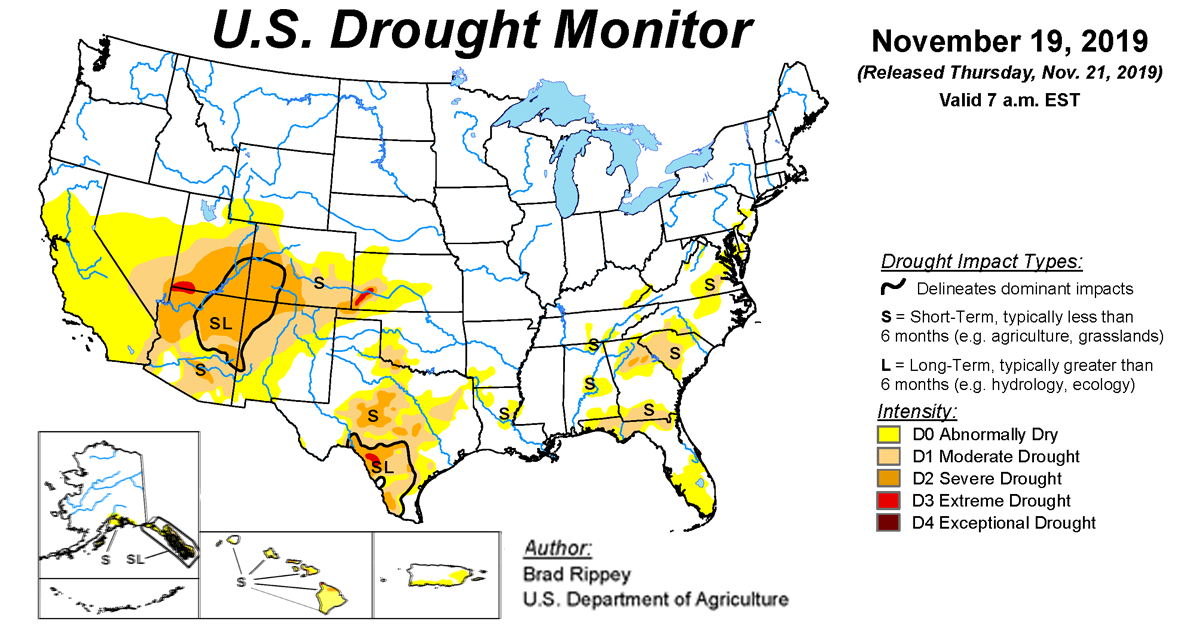
According to the November 19, 2019, U.S. Drought Monitor, moderate to extreme drought covers 12.2% of the United States including Puerto Rico, a decrease from last week’s 12.9%. The worst drought categories (extreme to exceptional drought) increased slightly from less than 0.1% last week to 0.2% this week.
Several upper-level weather systems moved in the jet stream flow across the contiguous United States, but they moved within a pattern that largely consisted of a high-pressure ridge over the West and a trough over the East. This pattern deflected Pacific weather systems into the Pacific Northwest and produced a generally northwesterly flow across the central part of the country. The northwesterly flow funneled cold and dry Canadian air masses into the Plains and East. The result was warmer-than-normal temperatures over the western contiguous United States, colder-than-normal weather over the eastern half of the country, and drier-than-normal conditions across most of the contiguous United States.
A couple of the upper-level weather systems snuck across the south, bringing above-normal precipitation to areas along the Mexican border. One of these systems tapped Gulf of Mexico moisture to soak the coastal Southeast along the remnant of a Canadian cold front. The rain in the south contracted drought and abnormally dry areas in the Southeast and parts of Texas, but continued dryness expanded drought and abnormally dry areas in the Southwest and parts of the central to southern Plains. On balance, the national drought area contracted slightly to 12.2% of the nation.
Abnormal dryness and drought are currently affecting over 94 million people across the United States including Puerto Rico—about 30.2% of the population.

The full U.S. Drought Monitor weekly update is available from Drought.gov.
In addition to Drought.gov, you can find further information on the current drought as well as on this week’s Drought Monitor update at the National Drought Mitigation Center. See their recent news releases.
The most recent U.S. Drought Outlook is available from NOAA’s Climate Prediction Center and the U.S. Department of Agriculture provides information about the drought’s influence on crops and livestock.
For additional drought information, follow #DroughtMonitor on Facebook and Twitter.



